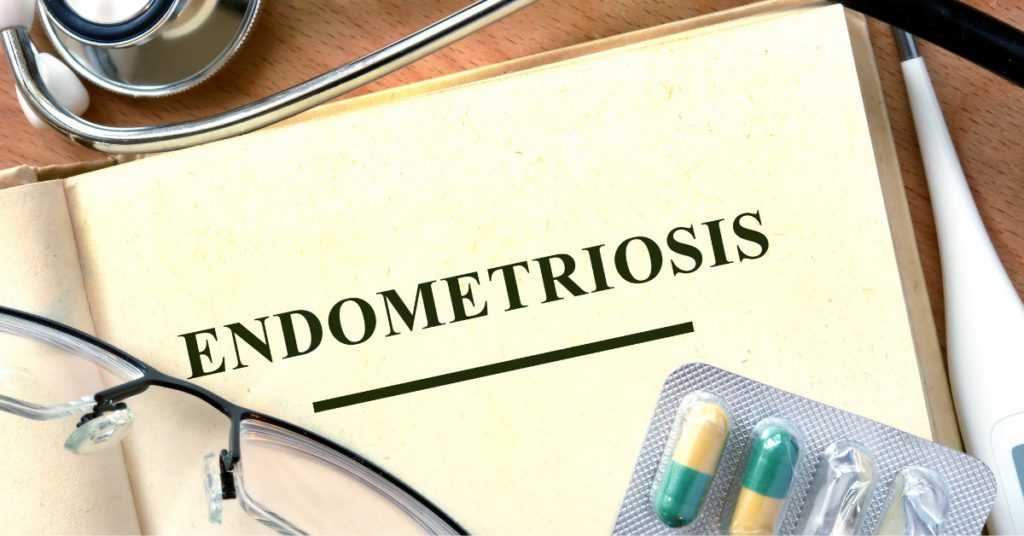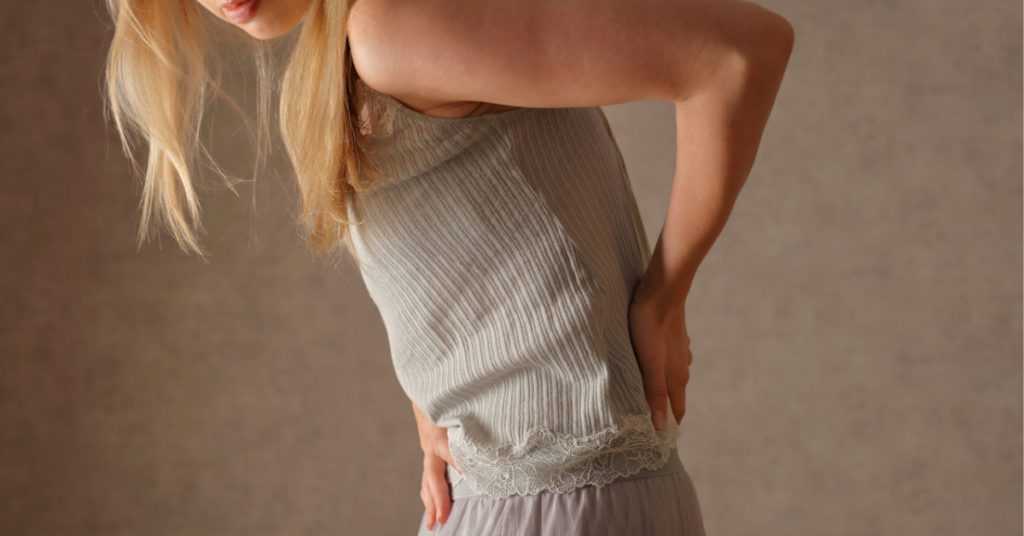Almost every woman experiences a little or much pain during her period. It is normal to have menstrual cramps. There could be premenstrual symptoms that are common to experience. Such as bloating, headache, backache, etc. But there is a need to worry if you are experiencing some other pain. Such as if you are having kidney pain during period, it means there could be some serious issue. You may be suffering from kidney endometriosis. According to studies, it affects 10–15% of females in their reproductive age.
Let us discuss what kidney endometriosis is? Because the primary cause of kidney pain during period is kidney endometriosis.
1- Kidney Endometriosis
The endometrium in the kidneys responds to hormonal changes during the menstrual cycle. It is breaking down and bleeding like the normal endometrium of the uterus. But it cannot leave the body. Causes inflammation and other complications. Over several menstrual cycles, there is frequent bleeding. This leads to endometrial cysts or endometrial tumors in the kidneys.
Endometrioma forms a fibrous layer that surrounds the kidneys and causes pain. Endometrial cysts can distort the shape of the kidney and affect kidney function. And if you compare menstrual cramps vs kidney pain, kidney pain is severe.
Causes
The cause of endometriosis is unknown. There are several theories, including:
Genetics
This condition is found in families. It affects people in certain ethnic groups more than others.
Retrograde Menstruation
This occurs when part of the uterine wall flows through the fallopian tubes and inserts in a pelvic organ rather than leaving the body for a while.
- An issue with the immune system against infection and illness.
- Endometrial cells systemically distribute in the bloodstream. Or lymphatic system, a series of tubes and gland’s part of the immune system.


Symptoms
Endometriosis on kidney symptoms could be like regular periods, though, but are severe.
Excruciating Period
Excessive Period back pain or kidney pain during period is normal in endometriosis. But you should not ignore it, especially if medications do not cure it. Such as ibuprofen or oral contraceptives, or if it worsens over time. Kidney pain during period Reddit suggests there could be 90% chances of endometriosis.
Blood in Stool and Urine
Blood in stool and urine is common in such conditions as there is a relation between the kidney and menstrual cycle. The debris of endometrial tissue can cause it, which collects in the abdomen and intestines. It results in swelling and bleeding during menstruation. Symptoms include persistent diarrhoea, stomach fullness, rectal bleeding, and bloody stools. Blood in urine during the menstrual cycle (Hematuria) is also common.
Heavy Bleeding
Do you change tampons and pads every 1-2 hours? Massive bleeding during menstruation (called menorrhagia) can be endometriosis on kidney symptoms, besides the normal endometrial tissue that drains from the uterine wall.
Endometrial tissue also bleeds during menstruation. The tissue has moved to places such as the ovaries and intestines. Another sign: a more extended period than usual. With endometriosis, menstruation can last for more than seven days. In contrast, normal menstruation lasts 3 to 5 days.
Other Symptoms
There are also some other symptoms which are due to both kidney and menstrual cycle such as:
- Feeling tired all the time.
- Difficult to urinate
- Recurrent urinary tract infection
- infertility
Diagnosis
Diagnosis of renal endometriosis can be difficult. The condition may be considered kidney cancer. Menstrual cramps vs kidney pain are also sometimes challenging to identify. Yet, physicians could go through the following diagnosis.
Initial Diagnosis
Initial diagnosis starts by noticing symptoms, such as low back pain and Hematuria during the menstrual cycle. These symptoms usually go away with hormone therapy.
Imaging Techniques
Imaging techniques such as:
- Ultrasound
- Contrast-enhanced computed tomography (CECT)
- Magnetic resonance imaging (MRI)
These techniques help detect endometrial lesions and cysts in and around the kidney. But, the images obtained do not clearly distinguish between endometriosis and malignancies. Hence are not helpful for a formal diagnosis.
Histopathological Examination
The most definitive diagnosis involves a histopathological examination of kidney tissue but requires an invasive biopsy with a risk of complications.
Treatment
There is a need to treat renal endometriosis. Failure to do so can lead to complications such as renal failure. Treatment options don’t depend on the kidney pain location but the location of the endometriosis. And whether the lesion is superficial or deep infiltration.
Hormone Therapy
Patients are often treated with hormone therapy, such as human gonadotropin-releasing hormone (GnRH) receptor agonists and oral contraceptives.
Laparoscopic Surgery
Laparoscopic surgery is for extreme cases with large renal endometrial tumours or persistent obstruction of the ureter. A surgeon who specializes in laparoscopic gynaecology should do it. However, invasive surgery can cause complications.
Endometriosis Diet
Experiencing left or right kidney pain during period, state that your diet is not good. You may have endometriosis. Treating the symptoms can be somewhat done by changing your diet. Talk to your doctor about dietary changes. That may affect the symptoms of endometriosis. They can recommend some of these changes:
- Increase your intake of omega 3 fat – High proportions of omega-3 and omega-6 fats are good. They could reduce inflammation in lesions such as endometriosis.
- Reduces trans fat intake – More fat intake is not good. Women who consume large amounts of trans fat has a 48% increased risk of endometriosis.
- Increase your intake of antioxidants – Antioxidant supplements can reduce chronic pelvic pain—one of the symptoms of endometriosis.
- Try an anti-inflammatory diet – An anti-inflammatory diet helps to treat the symptoms.
- Avoid sugar and processed foods – Choose natural fruits and vegetables. Eat more omega 3 fatty acids and less processed carbohydrates, such as white bread. Avoid artificial fats.
Kidney pain during period could also be due to kidney stones.
When you feel pain in the left or right kidney during period, you can feel it on the sides or centre of the upper back. Usually under the ribs, right or left of the spine. Many women think that kidney stones are dysmenorrhea (Menstrual cramps). Both are different. Let’s look at what kidney stones are to better differentiate between kidney stone pain and period cramps.


2- Kidney stones
Kidney stones are hard, crystalline minerals inside the kidneys and urinary tract. Renal calculi is another name for Kidney stones. Such a condition of kidney stones is nephrolithiasis.
The presence of stones throughout the urinary tract is urolithiasis. You may have kidney stones, and the menstrual cycle is about to start. You may confuse kidney stone pain with menstrual cramps.
Symptoms of kidney stones
Pain on the sides of the abdomen (abdomen) or groin; men may feel pain in the testicles. The exact kidney pain location is difficult to determine.
- Fever
- Feeling sweaty
- Period back pain or kidney pain
- Bloody urine
- Urine infection
Diagnosis
Diagnose of kidney stones involves different types of tests if you are experiencing any symptoms such as left or right kidney pain during period.
There are the following tests:
- Urine test to look for infections and stone fragments
- Examination of stones in the urine
- A blood test to ensure that your kidneys are functioning normally. To check the levels of substances that can cause kidney stones, such as calcium.
- Ct scan
- Ultrasound scan for pregnant women
Treatment
For small kidney stones
If the kidney stone is small, it could be removed in one or two days through urine. The doctor may suggest painkillers to treat pain. NSAIDs can treat both menstrual cramps vs kidney pain.
- Drink plenty of water during the day
- Medicine for illness
- Alpha-blockers (drugs that help remove stones)
For Large kidney stones
Surgery is the primary option for this problem. It is not the kidney pain location but the stone location that determines the type of surgery. The most important types of surgery to remove kidney stones are:
- Ureteroscopy
- Shockwave lithotripsy (SWL)
- Percutaneous nephrolithotomy (PCNL)
Now you know that if you are experiencing kidney pain during period, it could be due to kidney disease. If you are experiencing severe pain, then don’t ignore it. Don’t get confused between menstrual cramps vs kidney pain. You should immediately consult expert nephrologists before it’s too late.
FAQs
1- What is the difference between kidney pain and back pain?
Kidney pain is more constant and, while back pain is stabbing and responds to movement and rest.
2- What is the Kidney pain location?
Kidney pain is felt in the sides, and from the middle to the upper back. The pain can also progress to the groin or abdomen.
3- Is endometriosis a serious condition?
It is a painful condition affecting the quality of your life, but not a fatal disease. However, it can cause life-threatening problems but in rare instances,
4-Is endometriosis cancer?
No, it is not. But women with this condition can be at risk of developing several cancers.
Book an appointment now, to answer all your queries. You can book an appointment with the top Nephrologists in Pakistan through Marham by calling at Marham helpline: 0311-1222398 or by online booking facility through the website or Marham mobile app.
Can’t Find The App?
Android Users:
https://play.google.com/store/apps/details?id=controllers.marham.marhammed&hl=en
Drop a review for us at Playstore if you’ve had a good experience!
iPhone Users:
https://apps.apple.com/pk/app/marham-find-a-doctor/id1095243102
Stay Home. Stay Safe!

